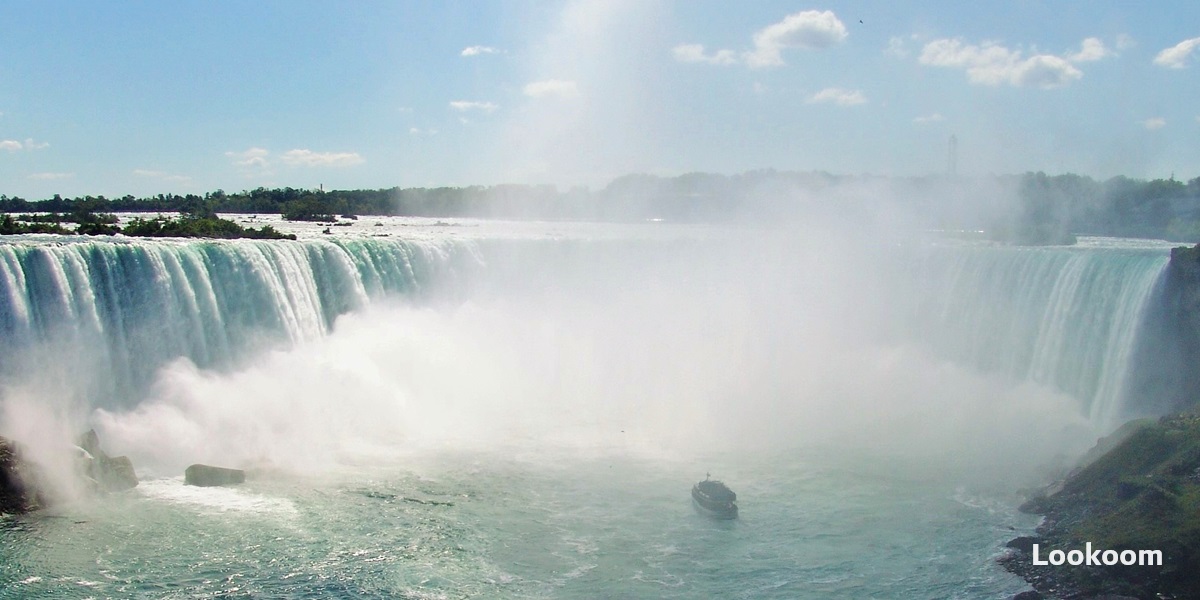(continuer en français) – Last updated: August 10, 2023

Only a few hours drive from major cities such as Toronto and Ottawa, Algonquin Provincial Park enjoys a high level of attendance. It is the most obvious place to reconnect with nature in the backcountry, attracting both locals and many foreign visitors.
At the end of the 19th century, when the first Canadian national parks were beginning to appear, the first being Banff in 1885, the province of Ontario decided to take the initiative to create the first provincial park in 1893, it was Algonquin Provincial Park. The initial concern was the rapid disappearance of the natural area in the south of the province with the development of human activity. The centuries-old primary forests of white and red pine were being cut down to sell beams to England or to the United States.
Since the beginning of the 19th century, winter camps have provided basic shelter for loggers. They took advantage of the frozen ground and waterways to position the logs, which were then swept away by the current fed by the melting snow in the spring.
The rivers were thus corseted upstream to facilitate the progress of tree logs.
Although losing a third of the volume of wood, the logs were cut with an axe to give them a square shape, easier to handle and store.
With the establishment of the provincial park, the idea was not to prohibit logging, but to better supervise it. It was also necessary to gradually relocate the farmers who had settled, then discourage hunters and trappers, often First Nations. Certain areas of the park are now forbidden to any human presence, to allow species to re-establish. There are now several wolf packs, black bears and moose being the other main species observed. Human activity remains moderate elsewhere in the park.
The opening to the public of a large part of the park provides access to preserved areas showing the quintessence of Canadian nature. The park is located in the transition region between coniferous and deciduous trees and benefits from a wide variety of plant species.
Hiking trails are laid out through the forest, varying in length depending on the abilities of the visitors. Most are along the Highway 60 corridor that runs through the park. There are also more challenging trails for those who wish to go deeper into the backcountry and reach remote camping areas.
There are more than 2000 lakes and more than 620 miles, 1000 kilometres, of river, so the traditional means of travel in canoes is regaining all its interest. Lake Opeongo is the largest lake in the park, canoes and kayaks allow access to less frequented areas. A water taxi service is also available to avoid over paddling.
Algonquin Park has attracted and inspired painters, notably the Group of Seven, also known as the Algonquin School, which was created in the same way as the Barbizon School in France or the Hudson River School in New York State. The group’s inspirer, Tom Thomson (1877-1917), stayed here many times before tragically losing his life in Canoe Lake. The park’s Visitor Centre presents an exhibition and sale of contemporary painters.
Then one day, autumn comes. Algonquin Park becomes a feast for the eyes and a joy for photographers for a few weeks. Until the last visit, with a little nostalgia, we promise to return next year.
To be informed of upcoming articles, register here (it’s free!).
…
Introduction to Canada
…
To be informed of upcoming articles, register here (it’s free!).
…
Articles about Ontario:
…
To be informed of upcoming articles, register here (it’s free!).



































Beautiful wilderness scenes. Love the red canoe and the fall colours. A
LikeLiked by 1 person
I’m glad we have this natural space so close to Toronto, and I’m not the only one! Thanks for reading.
LikeLiked by 2 people
Your opening photo is spectacular! The low profile of the cabin is unusual. What a beautiful place to see the fall colors and not far from Toronto.
LikeLiked by 2 people
The trouble is that there are a lot of people, especially at fall. But it is a perfect example of a park that allows to keep a large space out of commercial pressure, no farming, no housing, reasonable logging.
LikeLiked by 1 person
I feel more relaxed just looking at your photos of this beautiful expanse of wilderness. Autumn colors are gorgeous.
LikeLiked by 1 person
You’re right, it’s the perfect place to unwind. The advantage of a park compared to the wilderness is the facilities, trails, lookout, signs and information boards, which allow visitors to make the most of it.
LikeLiked by 1 person
looks like a mighty fine place to go hiking indeed. love the way the logs and wood are used to build
LikeLiked by 1 person
The log cabin was the collective shelter for the loggers during the winter, a crude construction. It is true that there are all levels of hikes, from half an hour to several days.
LikeLike
What beautiful fall colours and what a gorgeous park. I’d love to be there right this minute. Thanks for showing the painters of the Algonquin school, I’d never heard of them but I like what you show.
LikeLiked by 1 person
Check out the names Tom Thomson and Group of Seven, they are painters of the early 20th century who took a fresh and charming look at the Canadian landscape. Thanks for reading.
LikeLiked by 1 person
Algonquin is easily one of my favourite places in Ontario. We’ve been coming here every summer for the past number of years and try to paddle to a different lake each time. I have yet to visit in the fall, but I’ve heard the fall foliage there is simply stunning (and very busy!!)
LikeLiked by 1 person
I agree that it is very busy during the beautiful summer and autumn weekends. One tip to avoid the long line to get to the Visitor Center and buy a permit (if necessary) is to enter through the East Gate which is much less busy.
LikeLiked by 1 person
Beautiful photos of a gorgeous park. The fall colours are spectacular.We used to do a lot of canoeing there and the early fall was my favourite time (we were lucky to always have good weather).
LikeLiked by 1 person
Fall is also without a doubt my favourite season in Canada, and Algonquin Park is the perfect place to enjoy it. It is nature a little arranged by man’s hand to make it beautiful.
LikeLike